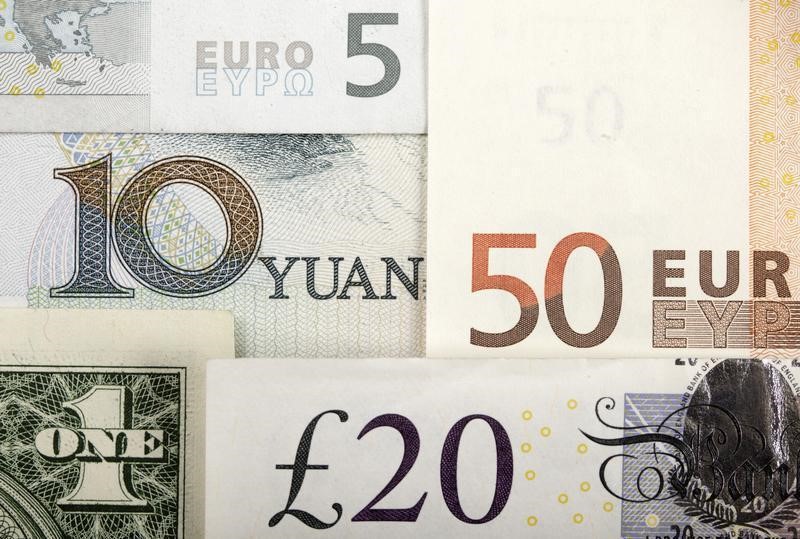* Euro helped by muted tone to stock markets
* Commodity currencies recover after two-day oil sell-off
* Yuan fixed at 5-week low, offshore rates close to 6.50 (Updates prices, adds comments)
By Patrick Graham
LONDON, Dec 9 (Reuters) - The euro rose on Wednesday back towards one-month highs hit after last week's unexpectedly cautious policy moves by the European Central Bank, while a pause in a brutal oil market sell-off let commodity-linked currencies regain a foothold.
Chinese authorities fixed the onshore rate of the yuan lower for the fourth day running, adding to a growing conviction in markets that Beijing will knock several more percent off its value next year as part of efforts to prop up slowing growth.
With the data calendar light, eyes will be on speeches by ECB officials Ewald Nowotny and Ardo Hansson for signs of the balance of power on the bank's governing council.
Its willingness to do more to ease policy next year looks increasingly just as important for the value of the euro against the dollar as the pace at which the Federal Reserve will raise interest rates after an expected first move next week.
"There's a generally more risk averse tone this morning and we think that may push the euro towards the mid-1.09s," Western Union currency hedging manager Tobias Davis said.
"However the closer to 1.10 we go, the more I would be inclined to sell it. Divergence will be the key theme throughout 2016, however we need to get through Dec. 16 first," he said, referring to the second day of the Fed's two-day policy meeting.
In early trade in London, the euro gained around a quarter of a percent to touch $1.0916. EUR= The yen was also firmer against the dollar at 122.79 yen JPY= , pushing the dollar index against a basket of currencies down 0.2 percent to 98.253. .DXY
Most of the action this week has been confined to commodity currencies after OPEC members failed on Friday to agree on an oil production ceiling, triggering a renewed sell-off in oil.
The slide has dampened investors' risk appetite, lending support to low-yielding currencies such as the euro and the yen this week, although their moves have been relatively modest.
Currencies of major commodity producers including Australia, Canada and Norway all steadied. The Aussie was up 0.3 percent at $0.7197 and remains well above long-term lows around 69 cents hit in September.
"The last couple of days has been people reloading on dollar longs against the commodity bloc," BNP Paribas (PA:BNPP) strategist, Michael Sneyd, said.
"We like commodity currencies as a way to play the Fed next week and the Aussie has not fallen as much as others so it looks susceptible to more losses. There's at least another couple of big figures there (it can fall)." (Editing by Louise Ireland)
